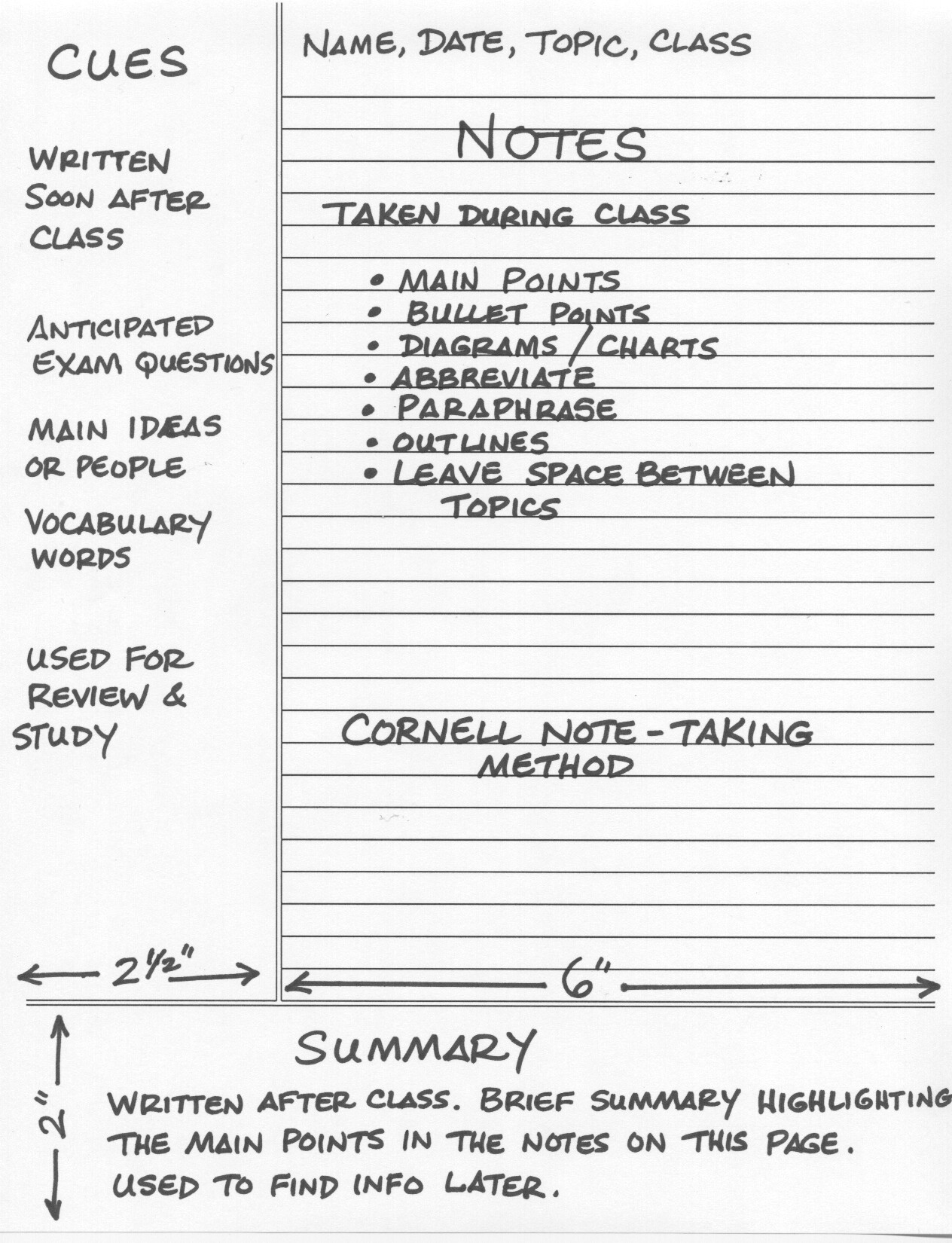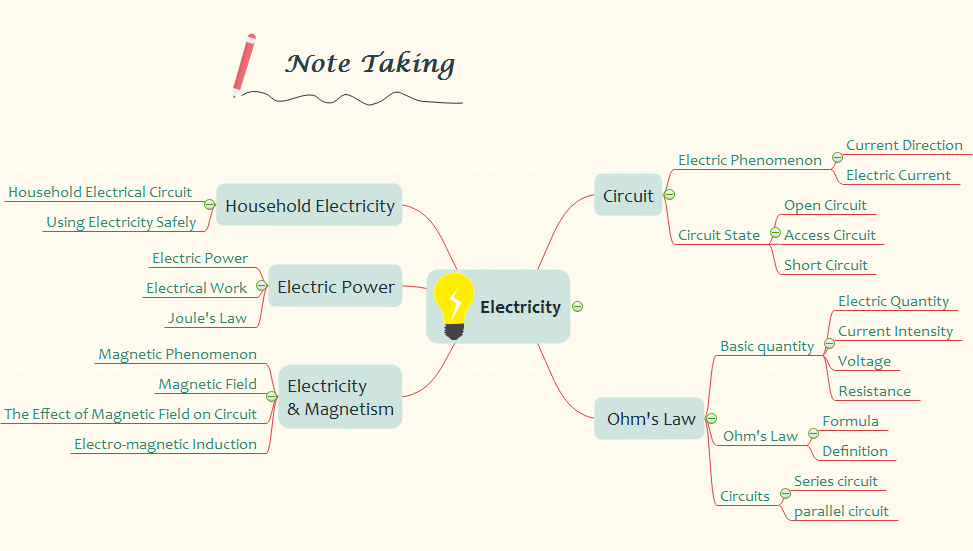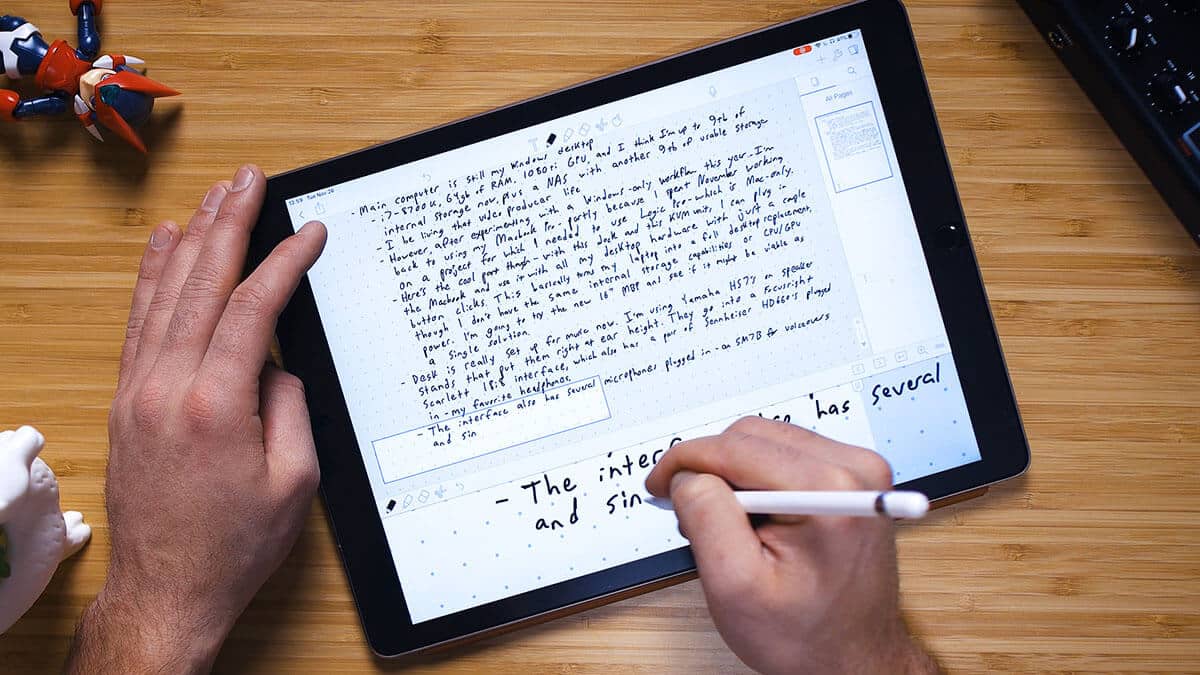Note-taking skills are an essential part of finding success in school or at work. Whether you’re a student, a business professional, or just someone who wants to be more organized, taking better notes can help you achieve your goals. But with so many different techniques and approaches out there, it can be hard to know where to start. Here, we’ll explore some of the best note-taking methods and offer tips on how to make the most of each one. By the end of this blog, you should have a clearer idea of which approach works best for you and your needs.
Find your method
Good note-taking is a skill that can take time and practice to perfect, but it doesn’t have to be overwhelming. There are many different methods of taking notes, each with its advantages and disadvantages. Whether you’re looking for something more structured or prefer a more freeform approach, there are plenty of options to consider.
Cornell Notes
The Cornell Method is widely used as a note-taking method both in and out of education settings. Developed by Walter Pauk, a professor at Cornell University, this technique focuses on breaking down and organizing information into categories for easy recall. When using this method, notes are taken in a two-column format: one column for writing main points and a second column for jotting down questions, summaries, or other related ideas.
This method allows you to easily review key concepts and create connections between different topics. Additionally, it encourages a simplistic approach to reviewing notes by including a section at the end summarizing your notes in a clear sentence or two. Cornell Notes are ideal for situations that require recall and reflection. This method is very effective for lectures or reading dense text because it helps organize main ideas, subtopics, and supporting details.
Mind Mapping
Mind Mapping is a versatile note-taking method that can be used to organize and visualize information. This approach focuses on creating diagrams or “maps” of ideas, concepts, and the relationships between them. For example, you might begin with a single concept in the center and then start branching off with ideas or facts that relate to your topic.
Mind Maps are useful for brainstorming new ideas as well as for intuitively organizing existing ones. The visual nature of mind mapping makes it a great note-taking method for subjects that require heavy recall like chemistry and history.
Note-Taking Apps
Utilizing a note-taking app such as Evernote or OneNote can help make taking notes more efficient. These apps have the ability to quickly categorize notes, store them safely in cloud storage, and can even transcribe text from audio recordings. As a result, users are able to quickly refer back to their notes and organize what they’ve learned.
Furthermore, some apps also feature handy “search tools” that allow you to easily locate certain keywords and can help save time when studying. Using a note-taking app can be incredibly useful for those who want to simplify their workflow or who want an extra layer of security when storing their notes. Note-taking apps work best for those who struggle with organization and recall.
Developing a Technique
1. Pay Attention
Paying attention in class or during meetings ensures you retain important information. This means putting away distractions and focusing on what’s being said. When you’re in class or a meeting, distractions like scrolling through social media or texting can keep you from focusing on the main points of what’s being said.
Moreover, employing active listening while in a lecture or business meeting can help you translate key ideas that were mentioned into practical notes. By practicing active listening and consciously tuning in to what a speaker is saying, you reduce the risks of misunderstandings. Learn more about this in our active listening blog. Also, do not be afraid to ask clarifying questions to ensure you fully understand the material being discussed. Questions like “What do you mean by this?” or “Tell me more about…” can help you develop a better understanding of what is being said while also allowing the speaker to elaborate on their point. Similarly, asking questions can help you process and retain the information that you are actively listening to.
2. Structure Your Notes
Structuring your notes with headings and subheadings is another essential aspect of note-taking. Headings should be used to highlight different topics and categories, while subheadings provide detail to further elaborate on the topics. Headings help you easily navigate different topics when reading, while subheadings allow you to outline main ideas so that you can quickly recognize them when reviewing your notes.
Additionally, numbered lists can also be useful for breaking down steps or processes, as well as outline key concepts to help you better understand the relationships between them. For example, when tackling a difficult math problem, creating a numbered list of the typical steps is an effective way to highlight the overall pattern for future use. Or when learning about the history, sequentially ordering the events can give you a better idea of how one connects to another.
3. Differentiate Subjects
Taking notes on multiple subjects can seem overwhelming. However, there are ways to effectively organize your class notes. The key is to create a system and stick to it. For example, if you are taking notes in three different classes it might be helpful to have three different colored pens or highlighters so that each subject has its own designated color.
In addition, separating your notes into separate folders for each subject can make it easier to find specific information later on. Having these sections also ensures that related materials, such as index cards and homework assignments, remain in their respective subject’s folder and can be easily found when needed. Establishing an effective note-taking system for different subjects also helps simplify locating assignments and studying for exams.
4. Review Your Notes
To get the most out of a class or business meeting, take the time to review and edit your notes regularly. By reflecting on your notes soon after writing them, you can identify gaps that still need to be filled and make sure that nothing has been lost in translation – all while it is still fresh in your mind. This will help you to retain the material more effectively and for the long-term.
Plus, reviewing your notes frequently will keep them front of mind and make preparing for tests or presentations easier. So give yourself a few minutes after each meeting to go over your notes and establish a better understanding of the material.
Conclusion
Ultimately, taking effective notes is a skill that can be developed and honed over time. Test out different note-taking strategies, like Cornell Notes, Mind Mapping, and note-taking apps to determine what works best for you. Then make your notes even more effective by paying attention to what is said, structuring and differentiating your notes, and reviewing the notes regularly. This should all improve your learning and recall.
If you would like assistance improving your note-taking skills, WorldWise Tutoring has professional educators who can help! Our personalized sessions help you to build a learning toolkit that is personalized to your needs. Hire a tutor today!
Written by Miguel Correa-West











